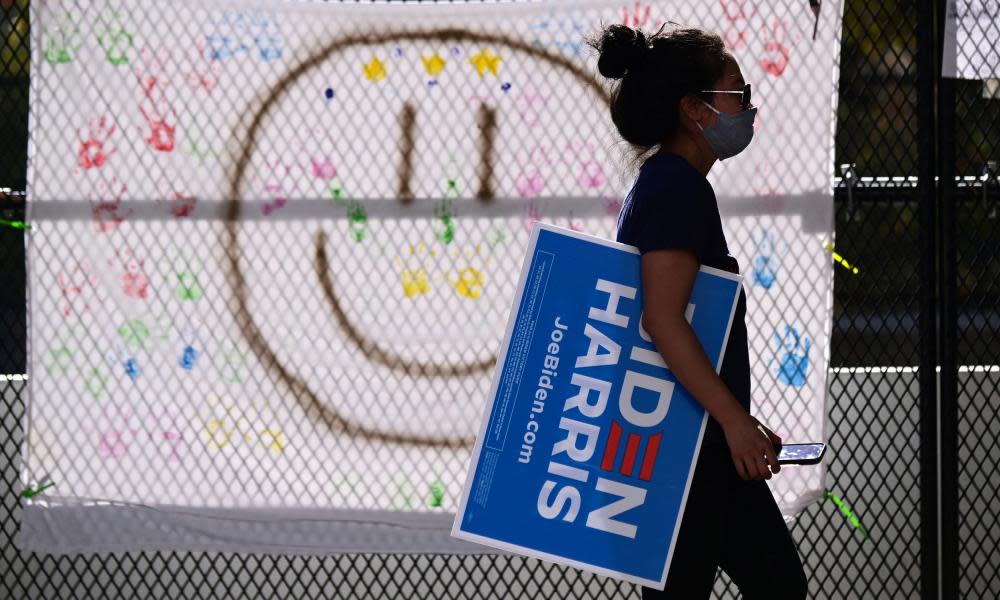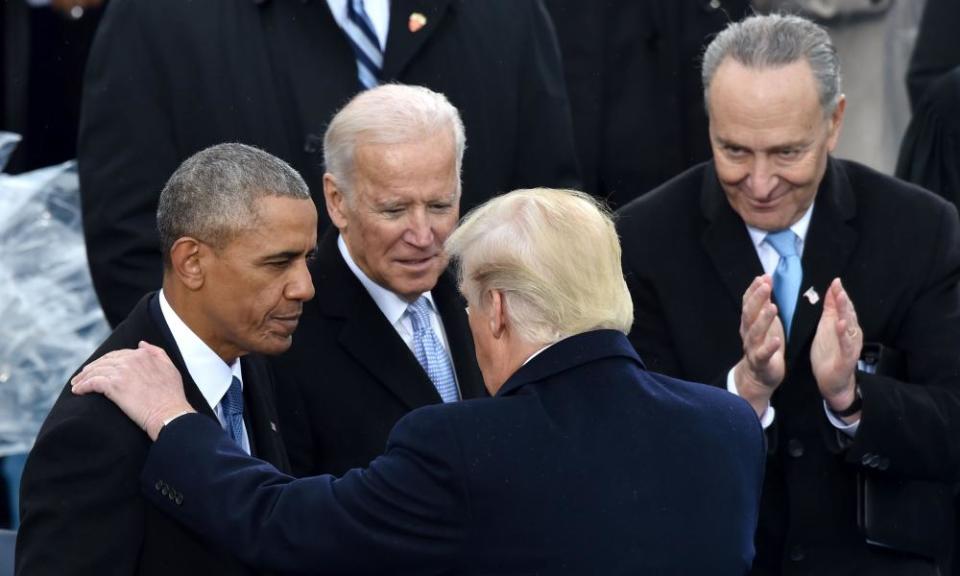US election: what happens between now and inauguration day?

Although Democratic nominee Joe Biden is now president-elect Joe Biden, there are still quite a few steps left in the US electoral process. He is projected to win, but a few more things have to take place before it becomes official. Here’s what happens now, and when it has to be done by.
When American citizens vote for a presidential candidate, they really are voting for electors in their state. Those electors in most cases are committed to support the voters’ candidate of choice. The number of electors is equal to the number of electoral votes held by each state.
8 December: this is the deadline for resolving election disputes at the state level. All state recounts and court contests over presidential election results are to be completed by this date.
14 December: electors vote by paper ballot in their respective state capitols and also in the District of Columbia, which while it is the seat of the US government, is not actually a state. Thirty-three states and DC have laws or party regulations requiring electors to vote the same way the popular vote goes in the state. In some states, electors can even be replaced or subjected to penalties if they do not toe the line. An elector who doesn’t vote according to who won the popular vote is known as a “faithless elector”. The votes for president and vice-president are counted and the electors sign six “certificates of the vote”. The certificates, along with other official papers, are sent by registered mail to various officials, including the president of the Senate.
23 December: the certificates must be delivered to the designated officials.
6 January 2021: the House and Senate hold a joint session to count the electoral votes. If one ticket has received 270 or more electoral votes, the president of the Senate, currently vice-president Mike Pence, announces the results.
If neither presidential candidate wins at least 270 electoral votes, the House can decide the election, based on the 12th amendment to the US constitution. If required, it would elect the president through a majority vote. That is not going to happen in 2021 – Joe Biden will easily clear the 270 threshold.

Photograph: Paul J Richards/AFP/Getty Images
20 January 2021: the president-elect is sworn into office on inauguration day. The outgoing president welcomes the president-elect to the White House. Then in a ceremony traditionally attended by all living former presidents, the new president swears the oath of office. This is presided over by the chief justice of the supreme court, which is currently John Roberts.
Related: Joe, Jill and the Bidens: who are America's new first family?
State of play in key states
Although the election has been “called” for Biden, vote counts continue. Biden leads in Pennsylvania by 41,233 and in Nevada by 27,530. Those states count for 26 electoral college votes between them.
It is much tighter in Georgia, which has already announced that it would be holding a recount. There, Biden has the edge by 10,195 votes. It is unlikely that a recount would change the vote. Over the last 20 years in 5,778 statewide elections in the US, there have been 31 recounts. Only three races have been overturned in that time – but in each case the final margin was only shifted by between 239 and 440 votes. Biden’s lead is narrow, but is much higher than that.
All three are examples of states where Biden’s vote-share rose significantly as absentee ballots began to get counted after election day.
In Arizona, the president-elect’s lead is just 18,713 out of the nearly 3.3 million votes cast. Libertarian party candidate Jo Jorgensen has amassed 49,366 votes so far. If those who had voted for her had opted for Donald Trump, then the state would have stayed red.
Trump’s campaign said on Saturday that it had filed a lawsuit in Arizona, alleging that the state’s most populous county incorrectly rejected votes cast by some voters.
Filed in the state’s superior court in Maricopa County, the campaign alleges that poll workers told some voters to press a button after a machine had detected an “overvote”.
The campaign said that decision disregarded voters’ choices in those races, and the lawsuit suggested those votes could prove “determinative” in the outcome of the presidential race.

 Yahoo News
Yahoo News 
